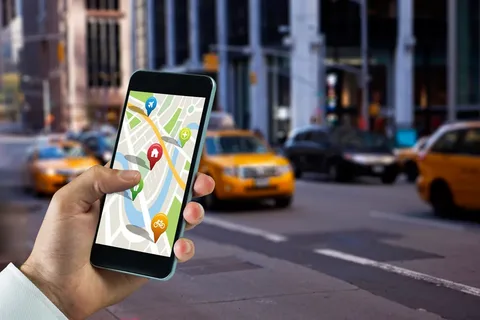As we know ride-sharing has become an integral part of our daily lives. Whether you need a quick ride to work, a comfortable journey to an event, or a safe trip back home late at night, ride-sharing apps have revolutionised the way we move around our cities.
If you’re considering entering the world of ride-sharing app development, you’re in for an exciting journey. However, one of the critical decisions you’ll face is choosing the right technology stack to build your app.
In this comprehensive guide, we’ll simplify the complex world of technology stacks, break down your options, and help you make the best choices for your ride-sharing app development project.
What is a Technology Stack?
Before we dive into the details, let’s start with the basics. A technology stack, often referred to as a tech stack, is a combination of programming languages, frameworks, libraries, and tools used to build a software application. Think of it as the building blocks that come together to create your ride-sharing app.
The Importance of Choosing the Right Tech Stack
1. Performance:
The tech stack directly impacts your app’s performance, including its speed and responsiveness. Users expect a smooth experience when booking rides, and the right tech stack can make that happen.
2. Scalability:
As your ride-sharing app gains popularity, you’ll need to scale it to accommodate more users and handle increased demand. The wrong tech stack can hinder your scalability efforts.
3. Cost-Efficiency:
The choice of technology can significantly impact your ride-sharing app development costs. Selecting the right stack can help you avoid unnecessary expenses and delays.
4. Security:
Safety is a top priority in the ride-sharing industry. A secure tech stack can protect user data and prevent security breaches.
Now that we’ve established the importance of choosing the right tech stack, let’s explore your options:
Native App Development
Native app development involves building separate apps for iOS and Android using platform-specific languages:
iOS (Swift/Objective-C):
If you prioritise a seamless user experience on Apple devices, Swift or Objective-C is the way to go. These languages are known for their performance and reliability.
Android (Java/Kotlin):
For Android users, Java and Kotlin are the primary choices. Kotlin, in particular, has gained popularity for its modern features and concise syntax.
Pros:
Excellent performance and user experience.
Access to platform-specific features.
Enhanced security.
Cons:
Development for two separate platforms can be time-consuming and costly.
Maintenance requires updates for both iOS and Android.
Cross-Platform App Development
Cross-platform development allows you to write code once and deploy it on multiple platforms. Two popular frameworks for this approach are:
React Native:
Developed by Facebook, React Native allows you to build mobile apps using JavaScript and React. It offers near-native performance and a vast library of pre-built components.
Flutter:
Developed by Google, Flutter uses the Dart programming language and provides a rich set of widgets for building beautiful, natively compiled applications.
Pros:
Faster development with shared codebase.
Cost-effective compared to native development.
Good performance and user experience.
Cons:
May not have access to all platform-specific features.
Slight performance gap compared to fully native apps.
Backend Technologies
The backend of your ride-sharing app handles critical functions such as user authentication, ride matching, and payment processing. You have several options for backend development:
Node.js:
Known for its speed and scalability, Node.js is a popular choice for building real-time applications like ride-sharing platforms. It’s JavaScript-based, making it convenient for full-stack development.
Ruby on Rails:
Ruby on Rails is renowned for its developer-friendly environment and rapid development capabilities. It’s a solid choice for startups looking to launch quickly.
Python:
Python, with frameworks like Django or Flask, is a versatile option for backend development. It’s known for its readability and robust libraries.
Pros:
Scalability and real-time capabilities.
Developer-friendly and rapid development.
Strong community support.
Cons:
Performance may be a concern for extremely high-demand apps.
Careful consideration needed for database choices.
Database Options
Your app’s database is the backbone of data storage and retrieval. Consider these database options:
SQL (e.g., PostgreSQL, MySQL):
SQL databases are reliable, ACID-compliant, and suitable for complex queries and relationships. They work well for ride-sharing apps that require precise data management.
NoSQL (e.g., MongoDB, Cassandra):
NoSQL databases offer flexibility and scalability. They excel in handling large volumes of unstructured data and can be suitable for specific ride-sharing use cases.
Pros:
SQL databases ensure data integrity and consistency.
NoSQL databases are highly scalable and flexible.
Cons:
SQL databases may require a structured data model.
NoSQL databases may lack complex querying capabilities.
Cloud Services
Consider using cloud services like AWS, Azure, or Google Cloud Platform to host your ride-sharing app. These services offer scalability, security, and reliability while reducing infrastructure management overhead.
Final Thoughts
Selecting the right technology stack for your ride-sharing app development is not just a technical decision; it’s a strategic one that can significantly impact the success and viability of your application. The ever-evolving ride-sharing industry demands a well-thought-out approach to technology, keeping your users’ needs at the forefront while also prioritizing performance, scalability, and cost-efficiency.
As you navigate this dynamic landscape, remember that your choice of technology stack can be a game-changer. It can be the difference between a ride-sharing app that seamlessly connects drivers and riders, providing a top-notch user experience, and one that struggles to keep up with demand or falls short in terms of features and reliability.
To ensure your ride-sharing app thrives in a crowded market, here are some key takeaways:
User-Centric Approach:
Always put your users first. Understand their preferences, pain points, and expectations. Choose a technology stack that enables you to deliver a user-friendly and reliable experience.
Performance and Scalability:
Ride-sharing apps need to handle a high volume of concurrent users and real-time data. Prioritize technologies that offer excellent performance and scalability. Cloud-based solutions, microservices architecture, and efficient database systems are essential components.
Budget and Resources:
Assess your budget and available resources realistically. While cutting-edge technologies can be tempting, consider their cost implications. Opt for a stack that aligns with your budget constraints while still meeting your development goals.
Market Research:
Stay updated on industry trends and emerging technologies. Be flexible and willing to adapt your technology stack as needed to stay competitive and meet changing user demands.
Security and Privacy:
Ride-sharing apps handle sensitive user information, so security is paramount. Choose technologies with strong security features and keep abreast of data protection regulations to ensure compliance.
Testing and Optimization:
Continuous testing and optimization are crucial. Regularly monitor your app’s performance, gather user feedback, and be prepared to make necessary adjustments to your technology stack to improve the app’s overall quality.
Innovation:
Look for opportunities to innovate. Consider incorporating features such as AI-driven route optimization, real-time analytics, or integrations with emerging technologies like autonomous vehicles to differentiate your app in the market.
In conclusion, the world of ride-sharing app development is as exciting as it is competitive. Success in this field hinges on making informed decisions about your technology stack, keeping your users’ needs central, and remaining agile in response to changing market dynamics. With careful consideration and a well-chosen technology stack, you’re on your way to creating an app that has the potential to revolutionize transportation in your city. Best of luck on your journey!





